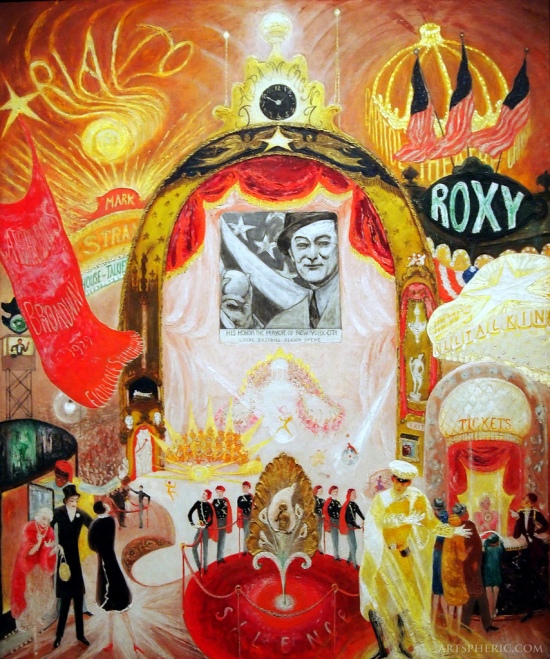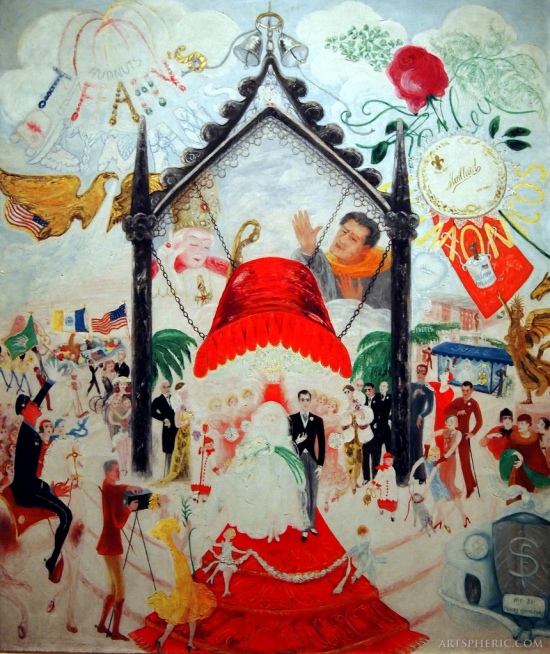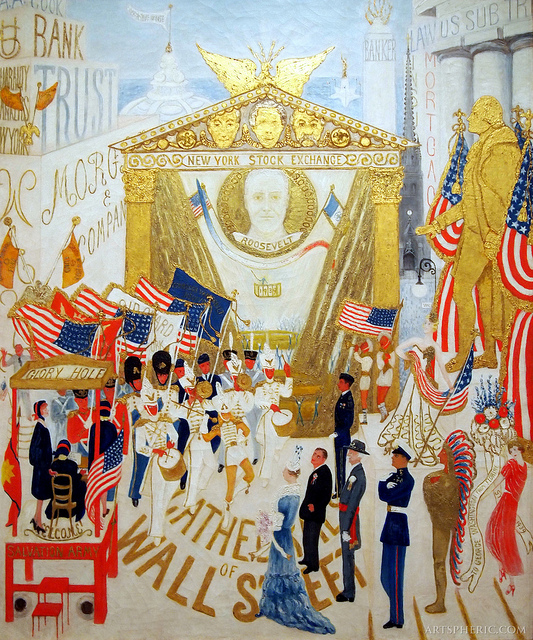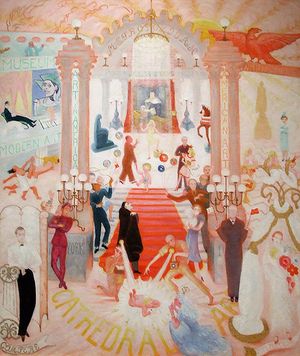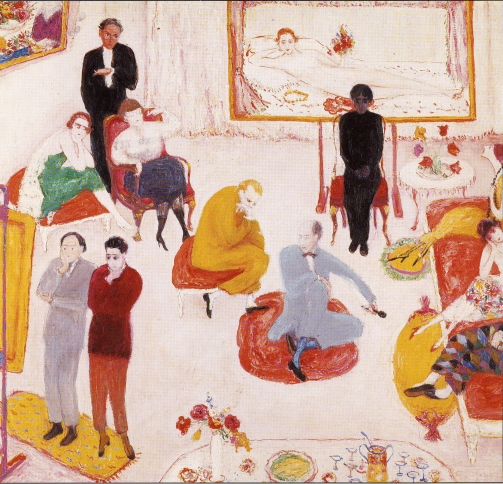There seems no better way to mark the Fourth of July weekend than to consider Florine Stettheimer’s Cathedral series, her four large paintings that Linda Nochlin describes as “grand, secular shrines dedicated to the celebration of American life” (107). All four of the paintings, The Cathedrals of Broadway (1929), The Cathedrals of Fifth Avenue (1931), The Cathedrals of Wall Street (1939), and The Cathedrals of Art (1944), are currently in the Metropolitan Museum of Art’s permanent collection.
As seen in the photo below, the Met displays the paintings together on a single wall, creating a lively, prismatic-like panorama of New York City life in the first decades of the twentieth century. The close proximity also draws attention, I imagine, to Stettheimer’s wry sense of humor and incredible attention to detail, which at once seems whimsical and precise. Nochlin considers the Cathedrals as being “perhaps the most consistent and ambitious expressions of Stettheimer’s social consciousness,” and the paintings certainly exude an exuberant, celebratory tone. But at the same time, “beneath the glowing admiration for American institutions and personae in this work… exists a pointed and knowing critique of them as well” (107, 113).
While the nature of this critiques isn’t always immediately accessible to a contemporary viewer, Stettheimer embedded within all paintings individuals and incidents that would have been recognizable to the New York artistic and cultural communities, of which she and her mothers and two sisters were considered to be major figures due to the fashionable salons they hosted. Marcel Duchamp in particular was a close friend of both the family and Stettheimer herself, and while I would never go so far to call her own style “surrealistic,” she certainly possesses a sly sense of humor and capturing a sense of absurdity in these paintings and throughout her entire body of work–qualities which I think allow her to capture a glimpse into American society and culture that, many decades after they were painted, continues to resonate with my own perspective of this country.
WORKS CITED
Nochlin, Linda. “Florine Stettheimer: Rococo Subversive.” 1980. Florine Stettheimer: Manhattan Fantastica. Ed. Elisabeth Sussman and Barbara J. Bloemink. New York: Whitney Museum of American Art, 1995.
PROVENANCE
The Cathedrals of Broadway (1929), The Cathedrals of Fifth Avenue (1931), The Cathedrals of Wall Street (1939), and The Cathedrals of Art (1944)
Florine Stettheimer
Oil on Canvas
Metropolitan Museum of Art
Full size images via Art Spheric
